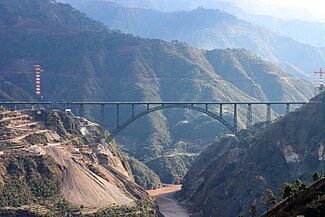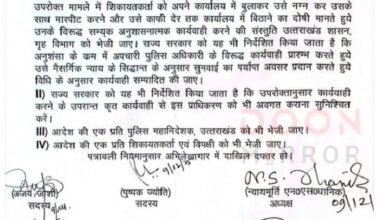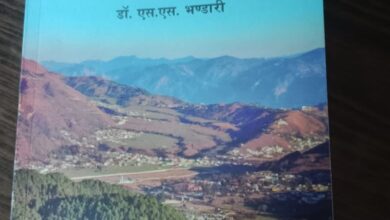Why is Indian Railways not ready to face Chinese threat?

Why is Indian Railways not ready to face Chinese threat?
By Rashme Sehgal
New Delhi, Jan 2
Union Home Minister Amit Shah declared recently in the Rajya Sabha that Pakistan Occupied Kashmir (PoK) is part of India. He had made a similar statement in 2019 in Parliament that both Aksai Chin and PoK form an integral part of the country.
The Chinese responded to this statement in 2020 by viciously attacking our troops in Galwan with clubs, sticks embedded with nails and stones to kill 20 of our soldiers. And as though to deliberately point a thumb at us, have gone ahead and are building an ambitious railway line that will connect Xinjiang to Tibet and will run through Aksai Chin, a region we claim is part of India.
This new railway line will start in Shigatse in Tibet and move along the Nepal border cutting through Aksai Chin and end in Hotan in Xinjiang. The first section of this line from Shigatse to Pakhuktso will be completed by 2025 and what should be of great concern to us is that this line is expected to pass through Rutog and around Pangong Lake on the Chinese side of the LAC. This new railway line will start in Shigatse in Tibet and move along the Nepal border cutting through Aksai Chin and will end in Hotan in Xinjiang.
The Chinese are also building a 1629 km line from Chengdu to Leh which international experts describe as being the most challenging railway project in history. If this is the infrastructure they are building in the eastern part of Ladakh, they also have the Lhasa-Nyingchi line that runs close to our border in Arunachal Pradesh which the Chinese plan to extend further east right up to Chengdu which is the provincial capital of Sichuan.
How is India responding to this challenge? The note for the approval of the Kashmir Rail Link was sent by the Railway Board to the Cabinet Committee as far back as 2002. Twenty- one years have passed since and this line has not been completed. In 2008, the then prime minister Manmohan Singh had announced the linking of all 5 north eastern state capitals by train by 2020. But this project has still to be operationalised.
The main drawback with these and other key railways projects has been that construction work is kickstarted without a proper ground survey and design alignment that took into account the geological, geotechnical and hydrological conditions that are must while conducting an alignment.
The same malaise was witnessed in the case of the Silkyara Tunnel where senior geologists pointed out that something as basic as tectonic fault lines were not taken into consideration before construction work started on this tunnel.
A retired chief railway engineer Alok Verma describes his own experience on the Katra-Bannihal rail link project in J and K to give an illustration about where the railways majorly blundered and when taken to task by the Shreedharan committee that was brought in to review their work, refused subsequently to take corrective action.
Verma was brought in to develop a fresh alignment which he and his team took four years to prepare (2004-8) which was different from the conventional slope-skirting type of alignment that had been prepared earlier. Work was suspended on this Katra -Bannihal line in August 2008 and the Railway Board brought in a committee of external experts to examine Verma’s proposal that had proposed work start afresh according to the new alignment.
But as happens in government departments, this plan got scuttled and Verma was transferred although 75 oer cent of the earlier plan was changed A PIL saw the Delhi High Court order the Railway Board to appoint a new expert committee to examine Verma’s proposal. By this time, Rs 5500 crore had been spent on this construction. Both CAG and the Public Accounts Committee of Parliament ( 2012-14) also asked the Railway Board to fix responsibility for the loss incurred by the earlier wrong alignment but despite this indictment the Verma proposal was not accepted.
The result of this steam rolling has been the extremely high cost of construction at Rs 400-700 crore per km of route length, which is about 8 to 10 times higher than the average cost in other mountainous region of the country. Mid-course changes in the alignment in order to deal with geological surprises has resulted in a reduced line capacity which means just 8 to 10 trains per day. This is half the capacity of the prevailing capacity of existing lines such as the Konkan Railways.
The inability to take corrective steps has meant the railways have had to spend huge sums of money in slope-stabilisation measures of doubtful longevity. This is presently being carried out in a total of around 40 huge bridges and 35 tunnels of 5-to15-km length, in order to glue and stitch together the crushed, fragmented or rubble-like rock strata. Many 50-to-100 metre high slope cuttings that are being built will pose a grave risk to the safety, stability and survivability of each of these lines since major earthquakes and excessive rainfall events are a common feature on the southern face of Himalayas where these lines are being built.
The other question concerns the stupendously high bridges that are being built close to the international borders. These include the Chenab bridge being flaunted as the highest railway bridge in the world, the Anji Bridge on the Kashmir line, and the Noney Bridge on the Manipur line. Security experts warn that while these bridges could be easy targets for the Chinese have and Pakistanis in times of a war.
In 2017, the Railway Board had approved two major projects namely a 456-km line stretching from Bilaspur in Himachal Pradesh to Leh in Ladakh, and a 327-km Char Dham line linking Badrinath, Kedarnath, Gangotri and Yamunotri in Uttarakhand. Both these projects suffered from serious flaws and many experts have advised the Railway Board to focus on completing their existing Himalayan projects before taking on new ones.
Strangely, the Leh project report had failed to account for the impact of high altitude on feasibility and cost of construction of long tunnels and large bridges. At that elevation — 3,500–5,000 m above sea level — oxygen supply gets restricted and people have trouble breathing. The cost of transporting material and equipment to that height was also not factored in. The last three years have, in fact, seen a surge of approvals for the construction of five mega road tunnels at those very same high altitudes in Ladakh. Nowhere is it clear if the alignment plans for these tunnels have taken into consideration the impact of high altitude. (I might also add here that a new alignment I had suggested for one of the projects in the Himalayas turns out to be similar to what China has opted for in the region).
The inability of India to complete its existing infrastructural projects has seen many of our neighbouring countries now opt to have closer ties with China. These include Nepal, Bhutan, Sri Lanka, Bangla Desh and Myanmar for whom China is building a railway line from Muse right up to Kyaukphyu on the Indian Ocean. The Chinese are using infrastructure to extend their influenceand mobility whether it be by constructing the Belt and Road initiative being built across PoK or the rail line cutting across Aksai Chin. Where does this leave India and its very valid security concerns is the million dollar question that our government needs to answer?
(Rashme Sehgal is an independent senior journalist)





